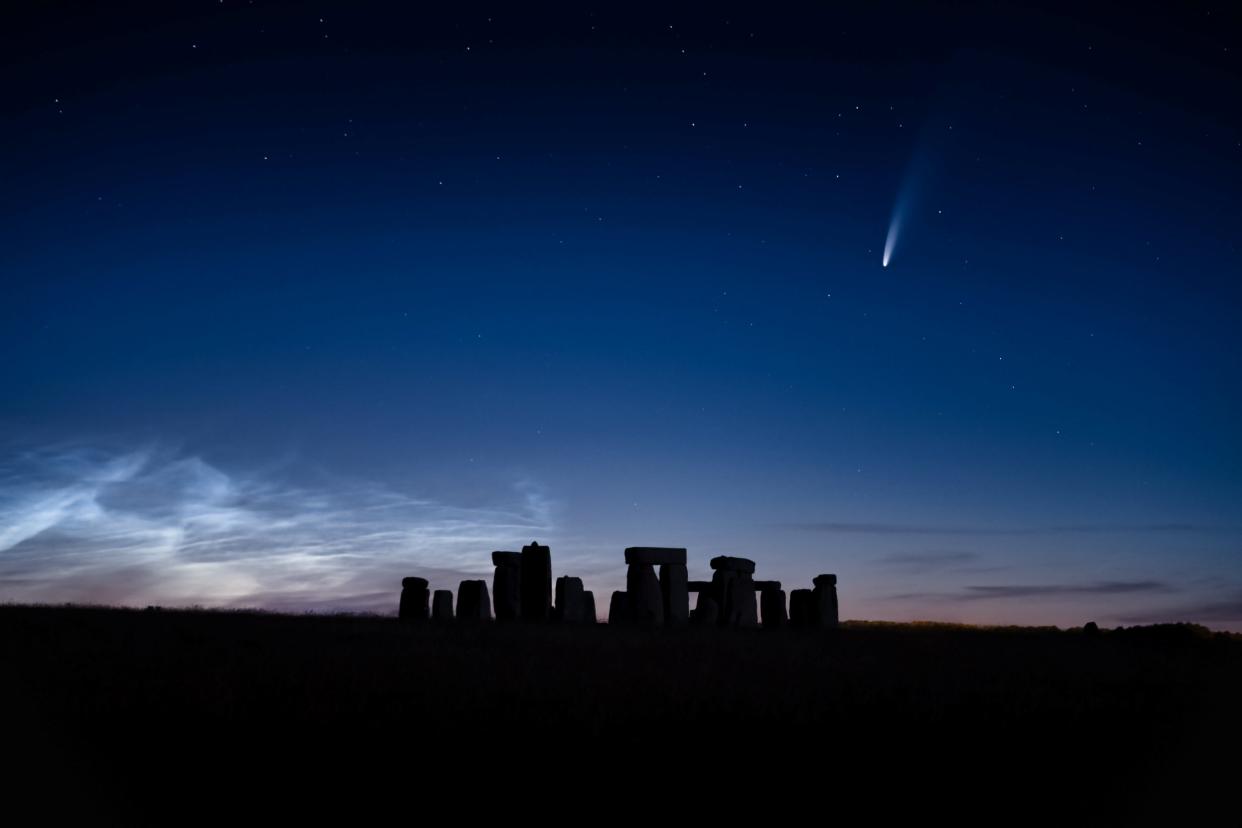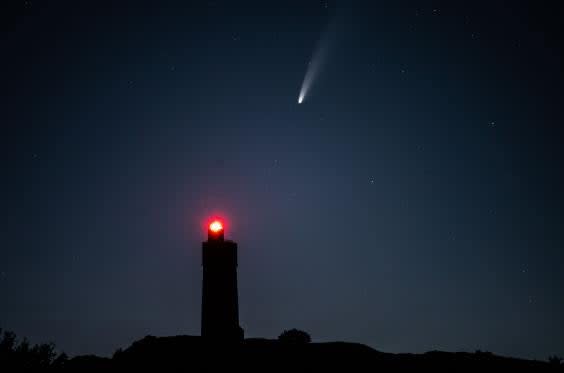Neowise Comet seen over Stonehenge in stunning new image

The comet Neowise has been seen above Stonehenge as it flies close to the Earth.
The object was first discovered in March, and has since grown so bright in the night sky that it can be seen with the naked eye.
It is the first of such comets to be seen in 2020.
The comet has been seen shooting over the ancient English monument, passing the Earth a harmless 64 million miles away, 400 times further than the distance between Earth and the Moon.
It is approximately five kilometres in diameter, with a nucleus covered in particles left over from its formation - which was shortly after the birth of our solar system, 4.6 billion years ago, Nasa says.
It is made of the same material as the dwarf planet Pluto, although Pluto has a set orbit around the sun while Neowise travels on a separate orbital track.
The comet will be visible throughout July, becoming closest to Earth on 23 July.
In the UK, the comet is circumpolar, meaning that it will not appear to set on the horizon.
However the comet will not be high in the sky, so could be obscured by trees or buildings.
It will be moving west, through the constellation of Auriga, and while astronomers are hopeful that the comet will retain its brightness its behaviour is uncertain as it moves away from the sun.
Although finding constellations can be difficult, apps such as Night Sky can be used to help amateurs get their bearings.
It will still be difficult to spot, though, as the summer's long nights and early mornings mean there are few times when the sky is dark enough to allow the comet to shine brightly enough.

Viewers will either have to try and spot Neowise late at night, or find it against a lighter sky.
Assuming that the comet does not disintegrate, it will reportedly be visible until mid-August.
Despite flying through space, comets are fragile objects and so their lifespan can be unpredictable. Recent other visitors such as Comet Atlas broke up before they could be fully visible from Earth.
The next time the comet passes Earth will be in 6,800 years.
Read more
Stunning images show comet NEOWISE as it flies through the sky

 Yahoo News
Yahoo News 
